Advantages and Disadvantages of AI Robots in Healthcare
Published: 26 Apr 2025
Have you ever wondered how AI robots are changing healthcare? While some people praise them for their ability to perform intricate surgeries and manage patient data, others question the impact they have on human jobs and patient care. Are AI robots truly enhancing healthcare OR are they creating more problems than they solve? In this article, I am going to talk about both sides, advantages and disadvantages of AI robots in healthcare to help you understand the dark and bright futuristic AI techniques.
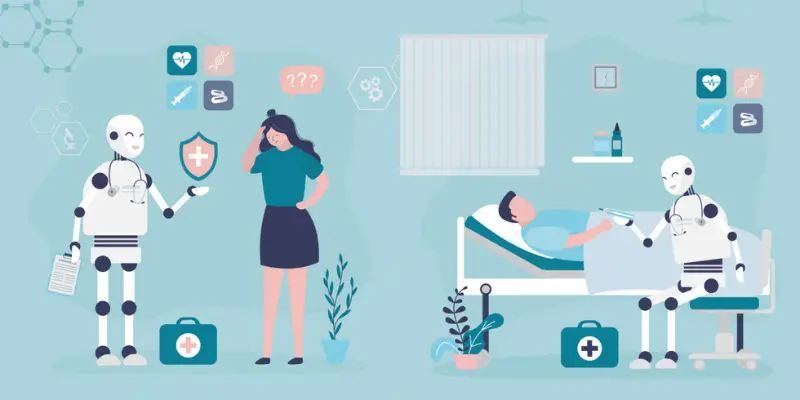
Advantages of AI Robots in Healthcare
AI robots bring a wide array of benefits to the healthcare industry. From assisting in surgeries to enhancing patient care, these robots are making significant improvements. Below are the key advantages of AI robots in healthcare:
| Advantages |
|---|
|
Let’s discuss each in some detail.
1. Increased precision in surgeries
AI robots can perform surgeries with great accuracy and reduce the chances of human error. This precision helps the doctors to make smaller cuts which lead to faster healing and less pain for patients. With AI technology, the robot can also perform delicate tasks that require steady hands. This improves the overall success rate of surgeries and makes recovery easier for patients.
2. Faster diagnosis and treatment
AI robots can analyze patient data quickly and accurately. This allows them to identify health issues faster than humans can. The quicker the diagnosis, the sooner treatment can begin which is crucial for conditions like cancer or heart disease. Faster treatment can lead to better outcomes and less stress for patients.
3. Reduced human error
Humans are prone to making mistakes, especially when dealing with complex tasks. AI robots can perform tasks like diagnosing diseases or administering medication with fewer errors. This reduces the chances of misdiagnosis or incorrect treatment, helping to keep patients safe. In healthcare, reducing errors can save lives and improve trust in the system.
4. Continuous monitoring of patient health
AI robots can monitor patients’ vital signs around the clock. They don’t need to take rest, so they can make sure that no changes in a patient’s condition go unnoticed. If something goes wrong, the robot can alert doctors immediately. This constant surveillance helps in preventing complications and provides timely interventions.
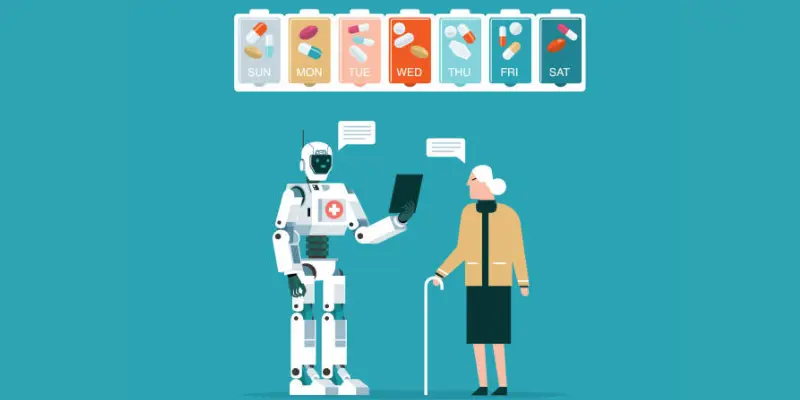
5. Enhanced efficiency in healthcare delivery
AI robots can handle repetitive tasks, such as scheduling appointments or organizing patient records. This frees up human workers to focus on more complex tasks and improve the overall efficiency of healthcare systems. The robots can also help with administrative duties, speeding up workflows and allowing doctors and nurses to spend more time with patients.
6. Cost savings in the long run
Though AI robots require an upfront investment, they can help reduce long-term costs. By performing tasks faster and more accurately, they cut down on mistakes, delays and unnecessary procedures. Additionally, robots can handle more patients without needing breaks and make the healthcare services more affordable in the long run.
7. Improved patient outcomes
With more accurate diagnoses, precise treatments and constant monitoring, AI robots help to improve patient outcomes. They can assist doctors in making better decisions, leading to faster recovery times and fewer complications. This results in healthier patients and a more positive overall experience.
8. Assistance in repetitive or physically demanding tasks
AI robots can take on tasks that are physically tiring or repetitive for healthcare workers. For example, robots can lift patients, move equipment or assist with cleaning. This helps to reduce the physical strain on healthcare workers and allows them to focus on providing high-quality care to patients.
9. Better management of patient data
AI robots are excellent at organizing and managing large amounts of patient data. They can store, sort and retrieve information quickly, making it easier for doctors to access important details. This improves the efficiency of healthcare providers and ensures that patients’ medical histories are always up-to-date and accurate.
10. Availability for 24/7 care
AI robots can work all day night without needing a break, thereby offering continuous care to patients. Whether it’s during the night or on holidays, robots are always available to assist with patient needs. This is especially helpful in emergency situations or for patients who require constant monitoring, ensuring they never feel neglected.
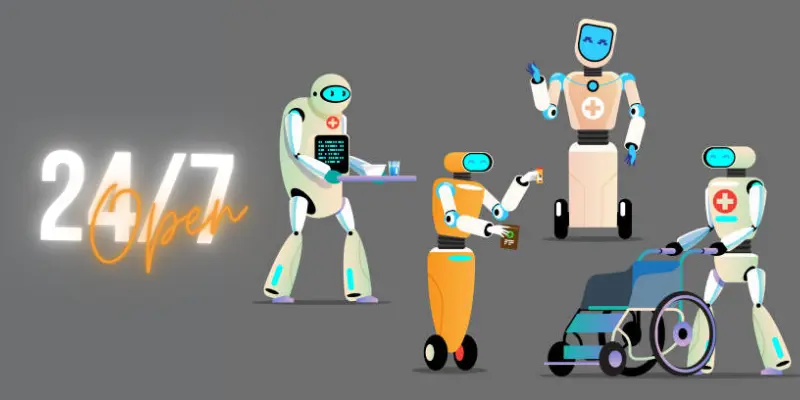
11. Support in remote and rural healthcare settings
In areas with fewer healthcare professionals, AI robots can play a vital role by the use of tele-surgeries in which highly experienced doctors perform surgery with 3D visuals. The AI robots can assist doctors and nurses in remote locations, providing medical services to patients who may not have easy access to healthcare. This helps in bridging the gap in rural healthcare, ensuring that people in these areas receive the care they need.
12. Reduction in healthcare provider burnout
Healthcare workers face high stress and long work hours, which can lead to burnout. AI robots can help by taking over some of the more repetitive or physically demanding tasks. This gives healthcare providers more time to focus on patient care, reducing stress and improving job satisfaction.
13. Personalized treatment options
AI robots can analyze a patient’s unique medical data to create personalized treatment plans. By considering factors like genetics, lifestyle and previous treatments, they can recommend the best course of action. This ensures that patients receive the care that is most likely to work for them, improving the chances of successful treatment.
14. Advanced rehabilitation capabilities
In rehabilitation, AI robots can help patients recover by guiding them through exercises. They can adjust movements based on the patient’s progress, making sure that exercises are tailored to their needs. This technology helps patients recover faster and more effectively, leading to better long-term outcomes.
15. Minimized infection risk during surgeries
AI robots can assist in surgeries with high precision, reducing the need for large incisions. Smaller incisions mean there is less risk of infection. Additionally, robots can work in sterile environments without touching anything unnecessarily and further minimize the chances of infections after surgery. This helps the patients to heal faster and stay healthier.
These are the key benefits of AI robots in healthcare, showing how they can improve the quality, efficiency and safety of patient care. Let’s move forward and discuss the drawbacks of AI robots in Healthcare.
Disadvantages of AI Robots in Healthcare
While AI robots offer many benefits, they also come with some serious concerns. It’s important to understand these drawbacks to make smart decisions about their use in healthcare. Below is a list of possible limitations:
| Disadvantages |
|---|
|
Let’s take a closer look at each of the above disadvantages.
1. High initial setup cost
AI robots cost a lot of money to buy and set up. Hospitals need special equipment, trained staff and strong tech systems to use them. This makes it hard for small clinics to afford these tools. The high price can stop many places from using AI robots, even if they need them.
2. Lack of human touch and empathy
AI robots can do tasks but they can’t show feelings like kindness or care. Patients often need comfort, a smile or someone to talk to. Robots can’t replace the emotional support that human doctors and nurses give. This can make the patients feel lonely or less understood.
3. Job displacement concerns
Some people worry that robots will take over human jobs in hospitals. Tasks like data entry, monitoring or even surgeries are now done by machines. This can make healthcare workers feel unsafe about their future. Job loss is a big concern when robots start doing too much.
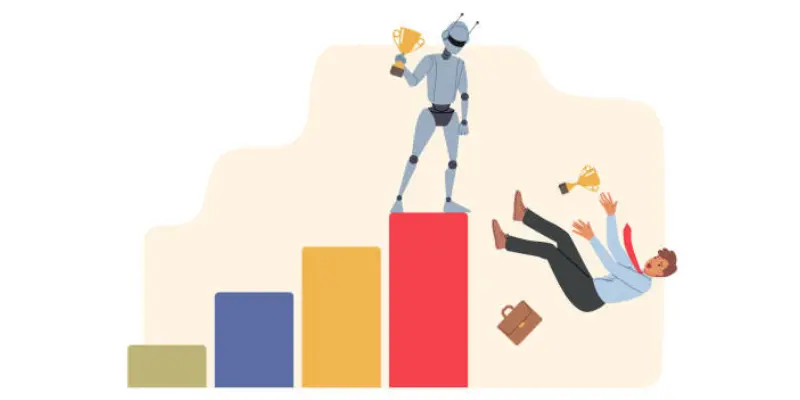
4. Dependence on data quality
AI robots need good, accurate data to work well. If the data is wrong, missing, or biased, the robot may make mistakes. It’s like giving wrong directions to someone which leads to bad results. So, the success of AI robots depends a lot on the data they get.
5. Privacy and security risks
AI robots collect a lot of patient information. If that data gets stolen or leaked, it can hurt patients badly. Hackers might try to break into hospital systems and steal records. Keeping patient data safe is a big challenge with AI technology.
6. Limited ability to handle complex emotions
Robots can’t understand human emotions very well. If a patient is scared, sad or confused, the robot may not respond the right way. This makes it hard for patients to feel heard or cared for. Emotional care is something only humans can give properly.
7. Technical errors or malfunctions
Like any machine, AI robots can break down or stop working. A small glitch can lead to serious problems in a hospital. For example, if a robot makes a mistake during surgery, it can harm the patient. These risks make some people nervous about using robots.
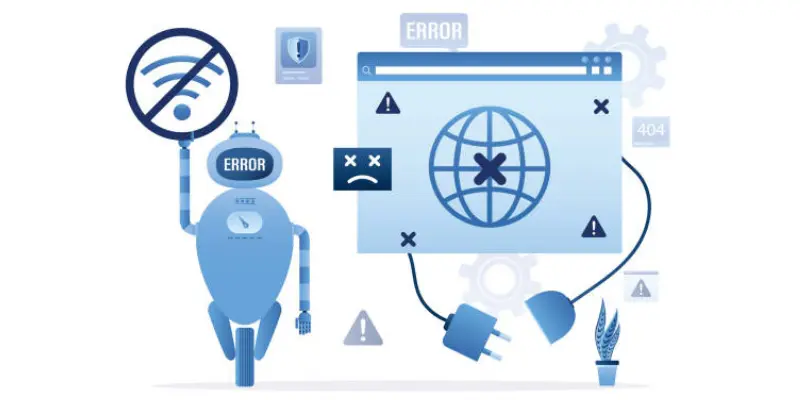
8. Need for regular maintenance and updates
AI robots need regular care to keep working well. Hospitals must update their software and fix problems often. This takes time, money and skilled people. Without proper maintenance, the robot may stop working when it’s needed most.
9. Limited decision-making in unexpected cases
AI robots follow rules and patterns. But in emergencies or rare cases, they may not know what to do. Human doctors can think fast and make new decisions. Robots are still learning to handle such surprise situations.
10. Ethical concerns in patient care
Using robots in healthcare brings up many moral questions. Who is responsible if a robot makes a mistake? Should a robot be allowed to make life-and-death choices? These questions don’t have easy answers. That’s why ethics is a big concern with AI in healthcare.
11. Training required for staff
Doctors and nurses need to learn how to use AI robots. This takes time, effort and money. Some staff may not feel comfortable using this new technology. Without proper training, mistakes can happen more often.
12. Risk of overreliance on machines
When people trust robots too much, they may stop using their own judgment. This can be dangerous, especially if the robot makes a mistake. Doctors should always stay involved and make the final decisions. AI should help and not replace human thinking.
13. Not accessible to all hospitals
Many small or rural hospitals don’t have the money or resources to use AI robots. This creates a gap between hospitals that can afford it and those that can’t. As a result, some patients may not get the same level of care. This makes healthcare less equal.
14. Potential for biased algorithms
If the data used to train AI robots is unfair or one-sided, the robot can become biased. This means it may treat some patients better than others. For example, it might miss diseases more often in certain groups of people. Bias in AI can lead to unfair care.
15. Legal and liability issues
If an AI robot causes harm, it’s hard to know who is legally responsible. Is it the hospital, the software company or the person operating the robot? These legal questions are still unclear. Until laws are made, this creates risks for everyone involved.
Fun Facts About AI Robots in Healthcare
Ready to be amazed? Here are 15 cool and surprising facts about how robots and AI are changing hospitals in ways you never imagined:
- In Hangzhou, China, robot dogs equipped with sensors and cameras assist elderly residents by delivering items, reminding them to take medications and providing companionship.
- Interestingly some AI robots in hospitals can sense your emotions by reading your face like a digital mind reader!
- There is a robot named “Da Vinci” that can make cuts smaller than a sesame seed during surgery.
- Robots are already delivering babies in some parts of the world with doctors supervising, of course!
- In 2017, an AI-powered robot named Xiaoyi developed by iFlytek, became the first robot to pass China’s National Medical Licensing Examination, scoring 456 points, 96 points above the required passing score.
- One robot called “TUG” can carry up to 1,000 pounds of supplies and still say “excuse me” in the hallway.
- Some AI robots now diagnose diseases by listening to your cough just like a doctor with super-hearing.
- AI-driven robotic coaches guide patients through rehabilitation exercises, providing feedback and monitoring progress to enhance recovery outcomes.
- Hospitals utilize robots to deliver medications efficiently across departments, ensuring timely administration and reducing staff workload.
- Robot assistants can now track your walking pattern to spot signs of Parkinson’s disease.
- During the COVID-19 pandemic, robots were deployed globally to monitor patients, sanitize hospitals and deliver supplies which reduced healthcare workers’ exposure to the virus.
- Some surgical robots can move a tool just 1/10,000th of an inch which is smaller than a human hair.
- Robotic technologies have been shown to significantly improve adherence to hand hygiene protocols among healthcare workers, promoting better infection control.
- Robotic systems equipped with sensors can remotely measure patients’ vital signs and minimize the need for direct contact and enhancing patient monitoring.
- A hospital in the U.S. tested robot dogs to patrol hallways and remind staff to wash their hands.
Conclusion
So guys! In this article, I covered Advantages and Disadvantages of AI Robots in Healthcare in a very detailed way.
From quicker surgeries to smarter patient support, these robots are changing how hospitals work. But like any tool, they are not perfect. In my view, using AI robots is a great step forward, as long as humans stay in control and patient care remains the top priority.
If you are curious about how these changes might affect your health or job in healthcare, keep learning and stay updated. Let’s shape the future of healthcare together and take one smart step at a time!
Related Question Answers
Here is a list of FAQs about Advantages and disadvantages of AI Robots in Healthcare;
AI surgical robots are designed to be very safe. They follow exact instructions and are controlled by skilled surgeons. Many hospitals use them for delicate surgeries because they help reduce risks.
Some AI robots can chat with patients using simple language. They answer basic questions or give reminders but they can’t replace real conversations with doctors. They are best for support and not for serious medical talks.
No, not all hospitals use them yet. Some big or advanced hospitals have started using AI robots but many smaller ones still don’t. The cost and setup are still too high for some places.
Smaller hospitals can explore leasing options instead of purchasing robots outright, significantly reducing initial costs. Government grants, healthcare technology partnerships and shared-resource agreements with larger facilities provide additional pathways to access. Some AI companies offer scaled solutions specifically designed for smaller healthcare facilities.
Yes, they can make mistakes, especially if they get wrong data or face something new. That’s why humans still double-check their work. It’s important to keep testing and improving these systems.
Training time varies depending on the complexity of the AI system and staff’s prior technical experience, typically ranging from several weeks to a few months. Most healthcare facilities implement phased training programs with ongoing support and refresher courses. The investment in training pays off through improved efficiency and reduced errors.
No, they do much more than surgeries. Some deliver medicine, clean rooms or help with patient care. Others work behind the scenes doing tasks like scheduling or organizing data.
Yes, patients maintain the right to informed consent, which includes choosing between robot-assisted and traditional care options. Doctors are ethically obligated to explain the benefits, risks and alternatives of robot-assisted procedures. Many healthcare facilities honor patient preferences while recommending the most appropriate treatment approach.
Modern healthcare AI systems can analyze patient-specific data to customize care plans and treatments. Machine learning enables robots to improve their performance based on outcomes and feedback over time. Many systems allow for personalization parameters that healthcare providers can adjust according to unique patient requirements.
Initial implementation may increase costs but over time, AI robots should reduce expenses through fewer complications and shorter hospital stays. Improved efficiency and accuracy can prevent costly medical errors and unnecessary procedures. As the technology becomes more widespread, economies of scale will likely make AI-assisted care more affordable for patients.





